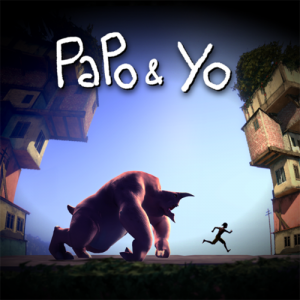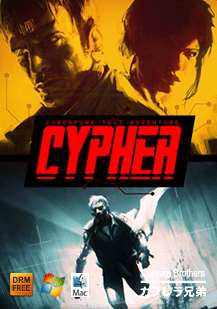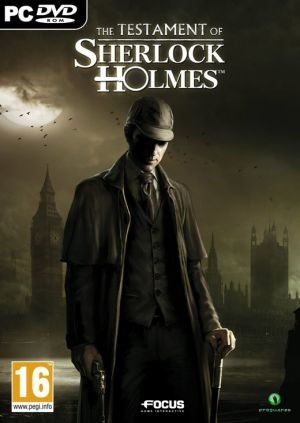Review for Gothic Fiction: Dark Saga

Lightning crashes and rain pours down in a constant stream. You’re visiting a secluded school to check out its suitability for your daughter, but it looks eerily abandoned... until a witch abducts your child and crazy tree roots burst through rock and stone blocking your path. Yes, it's just another day in the haunted casual game neighborhood in ERS Studios’ lite adventure Gothic Fiction: Dark Saga. Here you’ll encounter the developer's signature lush hand-drawn artwork along with a ton of exploration. As the title hints, there’s an involved backstory to unravel as you try to save your daughter, but you'll have to machete your way through some bad acting, very easy puzzles, and the feeling that the designers put more effort into the Collector's Edition bonus play than the main game itself.
You and your daughter Hannah have moved to a new town in England, far away from your old home in New York. As a bus drops you off in front of the school Hannah will be attending, you notice that the building looks more than a little worse for wear. In fact, you discover that the school has been closed for more than 40 years. Why you don’t discover this until you arrive is never revealed – an important detail that would have saved you a lot of trouble – but the reason for its abandonment soon becomes apparent when a nasty witch appears in billows of smoke and abducts your child. As soon as she does, the school and its environs become overgrown with gigantic vines, trees, and roots, gnarled and twisted and very much alive and menacing.
The story behind your daughter’s disappearance mirrors the tale in a strange book you find, which is missing most of its pages at first. Your investigation leads you to its scattered pages, which are pretty much the only vehicles for this story, as most of the folks you encounter in this school are either dead or ghosts. The lone exception is one Christopher Warden (or Worden, a frustrating inconsistency that the game spells one way while the journals write it the other way), a man charged with watching over the children. He also has a dark secret, and may have had an encounter with the witch before the school began its decline.
The search for your daughter takes you through scenes choked with hand-drawn detail everywhere you look. Tree roots more like monstrous tentacles curl around doorways, their green bark split open with blinking, yellowed eyes and vicious mouths full of sharp teeth; paintings featuring mythical beasts dripping with fire and knights shimmery in their armor hang askew along the school’s halls. If you play on the game’s harder level, where the hotspots no longer sparkle, you may find it difficult to find inventory objects given the large amount of detail in every scene. Even your inventory menu at the bottom of your screen is made of intricate curlicues of green ironwork. It all can be a little bit much at times.
Going with a botanical theme, the colors are awash in greens, greys, and earthen browns. Despite the large number of scenes you’ll explore, this heavy-handed color palette and the wild abundance of overgrown vines and trees make many areas seem just like the one you’ve just left. Whether I was poking around an old sanctuary, a creepy child’s dorm room filled with abandoned toys, or a laundry room, since everything is covered in tree limbs and roots, every scene felt rather monotonous to me.
Set against these backgrounds, ERS has once again turned to full-motion video to supplement the hand-drawn aesthetic. Rather than adding to the game, unfortunately, I found the use of FMV to be extremely distracting. The acting, or rather overacting, in many instances only added to the dubbing distraction that the designers attempted to disguise rather than embrace. No character can say anything without wind blowing their hair across their mouths and faces or turning their backs to you. I wondered why the designers went with the FMV choice since they chose to obscure the actors so much. It felt like some strange pantomime at times. The voice acting is just fine, and I would have preferred animated voiceovers to poorly implemented FMV. An additional distraction is the fact that the actors playing children appear to be much too old for their parts and often dress in very bad fashion: One young man wears a dark seventies disco reject with white shoes, a black three-piece suit, and white flyaway lapels. These “children” look to be more in their late 20s rather than school age kids.
The ambient animations, on the other hand, do a fine job of setting the mood. Every scene is crawling with roots swaying and hundreds of eyes peeping and jaws snapping. Some animations, however, are downright annoying. The game provides you with two journals, each of which goes through a short animation every time you click on it, which dissuaded me from clicking too often either to read more about the witch’s story or to gain insight into my own. Other animations are much more successful. Shadows flickering in your peripheral vision across a car's side mirror instill fear. Other juicy scenes involve a nail gun and the unearthly screams of a plant and the blacked-out moments just after a car crash. You awaken and see a dark screen where dozens of spooky eyes suddenly light up; high pitched voices whisper: "Wake up, wake up, wake up." I found these instances to be deeply creepy and wished that the designers had focused on more of these types of animations rather than the distracting FMV.
ERS definitely has a signature musical style, and in this instance the soundtrack detracts from the gothic mood the game is attempting to achieve. The whispers of flutes, the deep bass notes of the piano, and the dapper honking of a clarinet are all a bit too jaunty for the supposedly macabre setting. It also loops for the most part, becoming overly repetitive. In fact, I eventually turned off the music to get away from the distraction. The ambient sounds are much more successful. Your typical gothic repertory is represented here, with owls hooting, crows cawing, thunder crashing, etc. Occasionally a moan will swoop in or the sound of a ladder banging against a window will break up the background noise. There are some nice touches too, such as the sound of rain clanging on a metal roof when you climb into a car. However, these effects often loop as well, with the same ghastly screams greeting you in scene after scene. Additionally, while at first it seemed like a nice detail, when you scroll over the inventory and the gate pops up, it creaks, every single time, which becomes a mite annoying when it does so for the 100th time.
Gothic Fiction gives you three difficulty levels to choose from. The hardest level still allows you to skip puzzles and provides hints, but their charges fill up very slowly, and it dispenses with black bar tips that typically indicate what you need to do to progress in the current environment. However, these tips sometimes provide interesting observations about an object you click on, so you'll miss out on these as well. The game provides you with a great map that indicates objectives, main quest items, and your location. This level of detail is a nice feature as you have five main locations with many, many individual areas within each to explore. Unfortunately, there is no ability to quick travel, which results in a lot of backtracking, though the designers help out somewhat with that. Occasionally ghosts will open up portals that take you directly to where you need to go next, though this usually only happens during major milestones. And when a portal does open up, make sure you’ve collected what you need before going through it; it won’t stay open, and you’ll have to navigate all the way back on your own if you need more items.
The puzzles themselves are a fairly even mix between straightforward inventory obstacles and logic puzzles. The game doesn’t go beyond the typical method of slowing your progress with lights mysteriously missing their switches, drawers without knob pulls, or plenty of locks with no keys. You’ll also need to gather a number of mystical balls of light. Why they're hidden is never explained, but you will eventually be given a reason to use them. Lights are a major theme in the game, as illumination will dispel many of the witch’s evil machinations. Along with looking for disposable light bulbs and batteries, you will gather some items that you can use multiple times, like a sword of strength. It is nice to hang onto something that you would logically keep anyway, like something sharp, but it's fairly irritating when you inevitably need to cut something but for some reason you can’t use your very sharp sword of strength to do it.
Logic puzzles are sprinkled liberally throughout the game. On some of the harder puzzles, often times pieces will light up if you’re on the right track. But when I say harder, I mean in relative comparison to four-piece jigsaw puzzles. The large majority of puzzles here are supremely easy, and I never had to resort to the skip button, except once at the end of the game for a tedious tile slider. You’ll find puzzles like manipulating wheels with holes in them to pass a ball bearing from one to the other, and a memory puzzle with a grand total of four pairs of items to match. One of the more intriguing sequences involves solving a set of puzzles within a painting that has been brought to life via mystical energy. You’ll be presented with objects like a torch, shrinking potion, an axe, etc., and you’ll need to determine in which order to use them depending on the obstacles the knight encounters. It is an immersive little puzzle, but you have no way of knowing what is coming up, so you can only solve it through trial and error. The animations involved, while lovely to look at the first time, become quite annoying when you have to go through them over and over again until you get the entire scenario correct.
The end of the game slows way down in terms of dramatic action, and you’ll find yourself doing an annoying amount of backtracking. After nearly four hours of play, the main storyline rewards you with a satisfying resolution, while the Collector’s Edition provides another hour of play with a bonus level where you must deal with some unleashed demons. There is no FMV here, and I found the artwork to be much more imaginative and beautiful. The world you descend into is surreal and hellish, with cool blues and splashes of hot orange fire. You’ll encounter floating stones and mirror shards, with creepy animations like little demons and their spindly hands reaching, grabbing, and trying to scramble out of a fiery pit. As you explore a desolate, destroyed underground city with bombed-out husks of buildings, you’ll even encounter more imaginative puzzles, like one where you have to clear tiles by clicking on one element and then clicking on its opposite.
Free from any hidden object searches, Gothic Fiction: Dark Saga still could have done with a fair bit of pruning in the art department. Full-motion video can add a layer of reality and some amount of immersion to a game, but poorly implemented FMV can pull you right back out of the moment, as it does here. You’ll be bombarded by detailed artwork, extensive animations, and a ton of creepy scenes to explore, which is impressive at first but would have benefited from a "less is more" philosophy by game's end. It's still a fairly entertaining lite adventure, but a lack of imagination and challenge in the game’s main chapters could have used some cross-pollination from the game’s superior bonus level. I'm pleased to see ERS continue to branch out from typical casual gameplay, but here's hoping the next one feels a little more grounded in its storytelling roots instead of relying on overly flowery gimmickry.




























